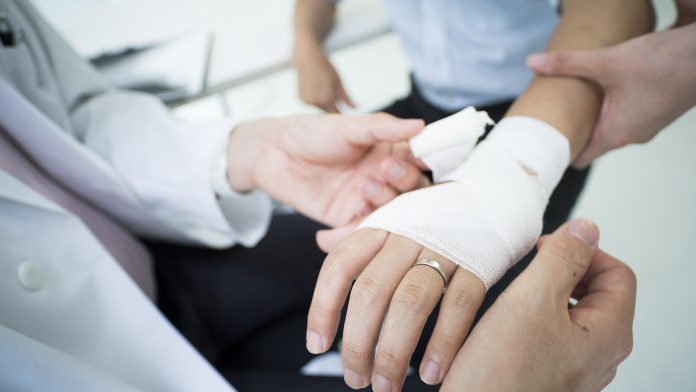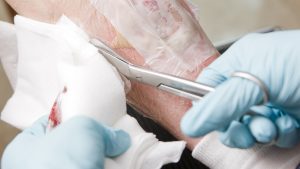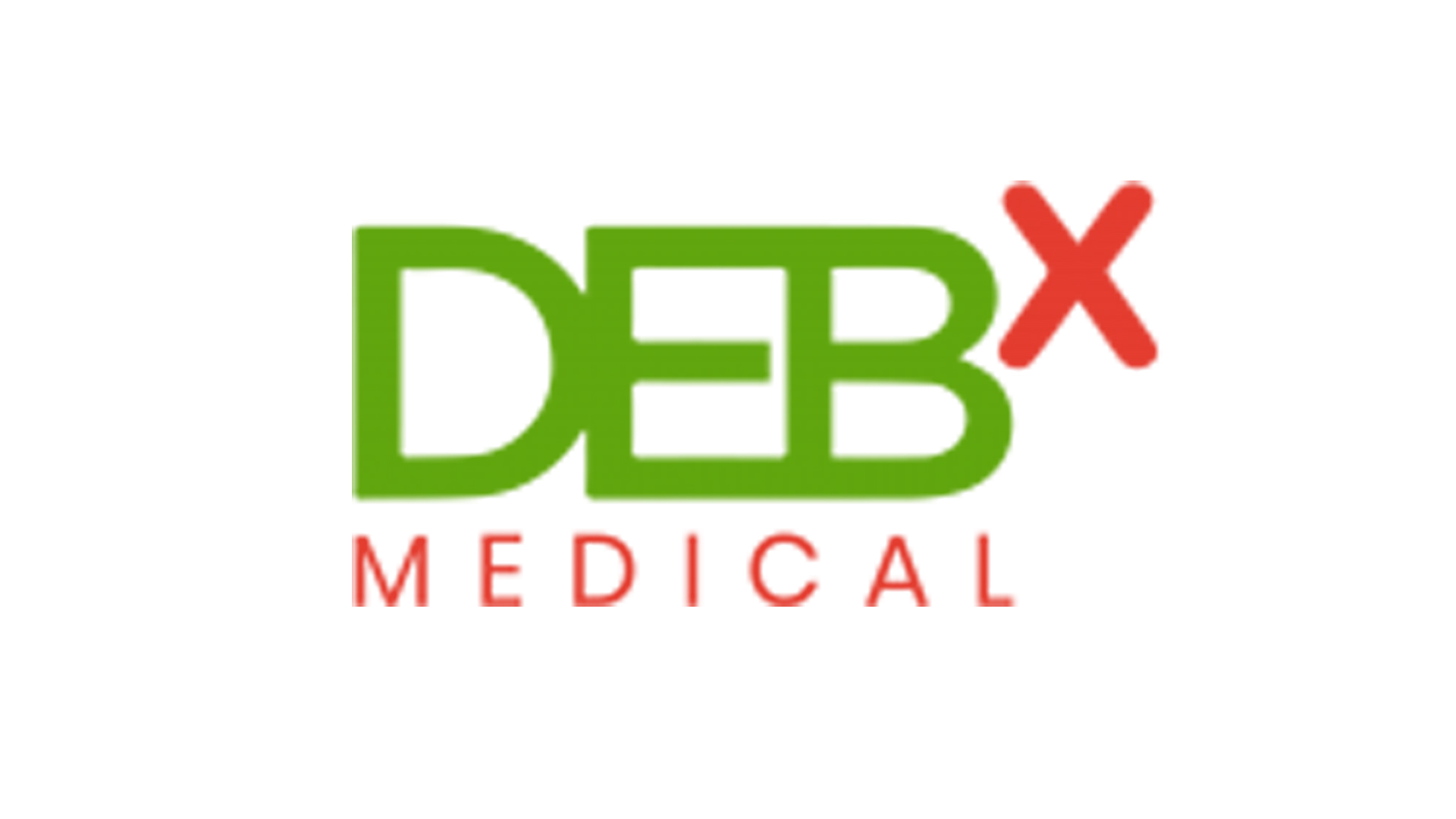
As COVID-19 shifted attention and medical resources from the community, chronic wounds are causing a pandemic of their own. However, DEBX Medical’s Debrichem® aims to bring a solution to avoid major surgery for these patients.
DEBX Medical is a Dutch medical technology company dedicated to advancing treatments to revolutionise the way we deal with infections in non-healing wounds. They work alongside clinicians to develop technologies and processes that are easy to implement and affordable, ensuring that all patients have access to the treatment they need. Chronic wounds affect millions of people globally and can have a devastating impact on both the patient’s quality of life and the hospitals costs due to their continued treatment needs. In order to alleviate this, DEBX Medical are working tirelessly in order to improve the treatment of chronic wounds at every step, from diagnosis to aftercare.
How did DEBx Medical come to be established? What expertise does your team offer?
Debrichem®, our first treatment, was developed with a vision in mind, to deliver a unique disruptive solution to battle infections, one of the most common reasons that wounds do not heal. Studying consensus documents and publications show more than 80% of wounds do not heal due to infection, mainly due to biofilm formation. Our founding trio, Bert Quint, a medical biochemist, Alberto Cogo, a Wound Surgeon, and Carlo Bignozzi, a Professor of inorganic chemistry, took a novel approach and developed a unique method to eliminate biofilm and inactivate pathogens present in non-healing wounds. Their research is based on a novel debridement concept, in which a desiccant gel rapidly disrupts the biofilm, pathogens and inflammatory proteins in the wound, turning chronic wounds to acute wounds. The entrepreneurial spirit of the founders has resulted in the fast development and rollout of Debrichem and its continual success in helping to battle chronic wounds.
Healthcare systems have been severely impacted by the COVID-19 pandemic, both in terms of workload and resources, but what has impacted patients requiring treatment for wound management?
The COVID-19 pandemic severely restricts the mobility of patients in need of care. This also affects chronic wound patients who have difficulty accessing specialised care for their wound management as wound care has largely moved to the home setting with remote monitoring and little access to clinicians. There are no official overall statistics yet, but the numbers of amputations in the pandemic have risen dramatically across the globe. For example, amputation rates in diabetes patients have increased significantly, by 300% in both the US and Europe on the back of the pandemic, in a rise that is now being called a ‘pandemic within a pandemic’.1

Due to its ease of use, Debrichem could be highly beneficial during the COVID-19 pandemic or similar situations where patients cannot reach hospitals to undergo debridement of their wounds because, in contrast to surgical debridement, it does not require a high level of specialisation. Debrichem can also be applied in an ambulatory setting by doctors and nurses since there is no need for a sterile room for the debridement procedure. Debrichem is a single treatment that is completed within a minute compared to surgical debridement, which often requires repetitive surgical intervention, for an average of 30 minutes.
Have healthcare professionals witnessed an increase in chronic wounds due to the pandemic and is a particular group at higher risk, for instance, patients with diabetes?
There has been a sharp increase in amputations in wound patients both suffering from vascular disease and diabetes, driven by the postponement of all elective surgeries and a shift of regular healthcare to urgent care only. Patients with underlying comorbidities such as vascular diseases or diabetes require rapid treatment of their non-healing wounds in most cases. As a result of care being temporarily postponed for vascular patients, while new patients could not enter the clinic for diagnosis and treatment, the number of major amputations increased from 18% in 2019 to 42% in 2020.2
Caruso et al (2020) write about similar experiences in their clinic and estimate a three-fold increase in risk for amputation due to diabetic foot ulcers.3 From their perspective, the mandatory lockdown had a disproportionately negative effect on patients with chronic diseases, especially people with diabetes and diabetic foot ulceration. They found a higher proportion of patients coming through emergency care than the regular outpatient setting.
What are the most significant challenges in providing effective wound care management, and what is the economic cost?
Surgical debridement is generally considered the best way to remove biofilm and reduce infection because it is quick, rigorous, and the most effective option. However, the biofilm is not visible to the human eye, which often means that several debridements are needed before the wound starts to granulate fully, requiring a long-term treatment plan and multiple painful procedures for the patient.
It often requires three to six procedures before reaching the closure of the wound, making surgical debridement expensive, typically costing between $7,000 to $30,000 per patient; it requires skilled operators and a sterile operating room.4
Unsuccessful treatment of difficult to heal wounds may lead to enlargement of the wound, bone involvement, or in the worst case, amputation. Both the human cost and the economic cost of amputation are not included in wound care costs today but dwarf the financial cost of treating the non-healing wounds. If it comes to the cost of amputation, not only does it debilitate people, but also amputation is one of the leading causes of premature death, with only one out of five patients surviving within five years after the procedure, with a 44% mortality rate in the first year and up to 80% in five years.
What can you tell me about your products? What benefits does Debrichem offer?
Debrichem aims to disrupt the treatment of non-healing wounds, by curing the wound rather than treating wounds to maintain status quo. Only one application of Debrichem results in a 90% granulation of cases within an average of 22 days, which is very efficacious and fast compared to historical chronic wound healing. The wound is debrided by desiccating (dehydrating) the wound bed in an easy, short, and comprehensive procedure, which can be performed in a non-sterile environment. When the wound bed is debrided in 60 seconds, the biofilm and the residing infection are all addressed within this one application. There is no dependence on the human eye to disrupt the biofilm and remove the infection, which should result in comparable efficacy across the board of skilled wound carers. Not only does Debrichem allow for fast treatment and fast results, but it also prevents amputation for many patients, saving the healthcare system as well as human sacrifices by preventing this dreadful outcome.
References
- Lee Rogers et al (2020), ‘Diabetes related amputations, a pandemic within a pandemic’. l J Am Podiatr Med Assoc doi: 10.7547/20-248
- Schuivens, P. M. E et al (2020). ‘Impact of the COVID-19 lockdown strategy on vascular surgery practice: more major amputations than usual’. Annals of Vascular Surgery. doi: 10.1016/j.avsg.2020.07.025
- Caruso et al, ‘Diabetic Foot Problems During the COVID-19 Pandemic in a Tertiary Care Center: The Emergency Among the Emergencies’. Diabetes Care 2020 Oct; 43(10): e123-e124. https://doi.org/10.2337/dc20-1347
- Guest, BMJ 2020, Cohort study evaluating the burden of wounds to the UK’s National Health Service in 2017/2018: update from 2012/2013
This article is from issue 19 of Health Europa Quarterly. Click here to get your free subscription today.









